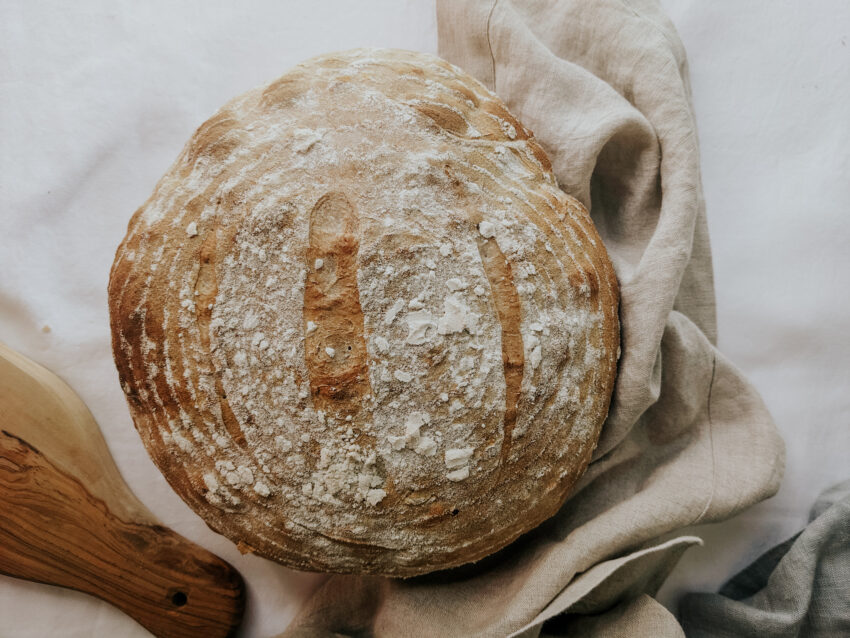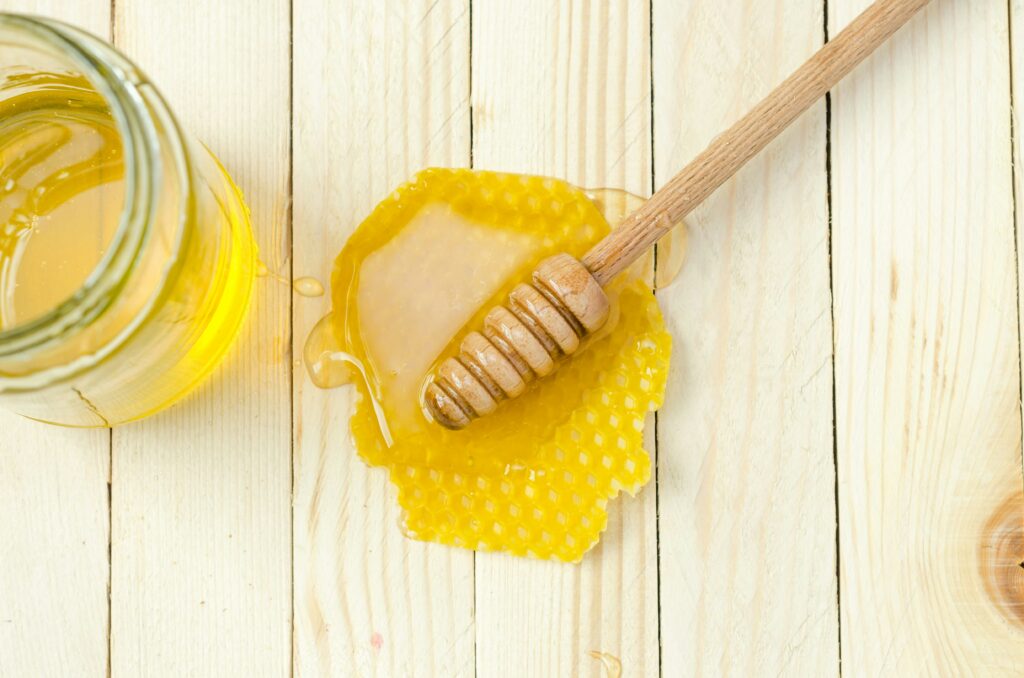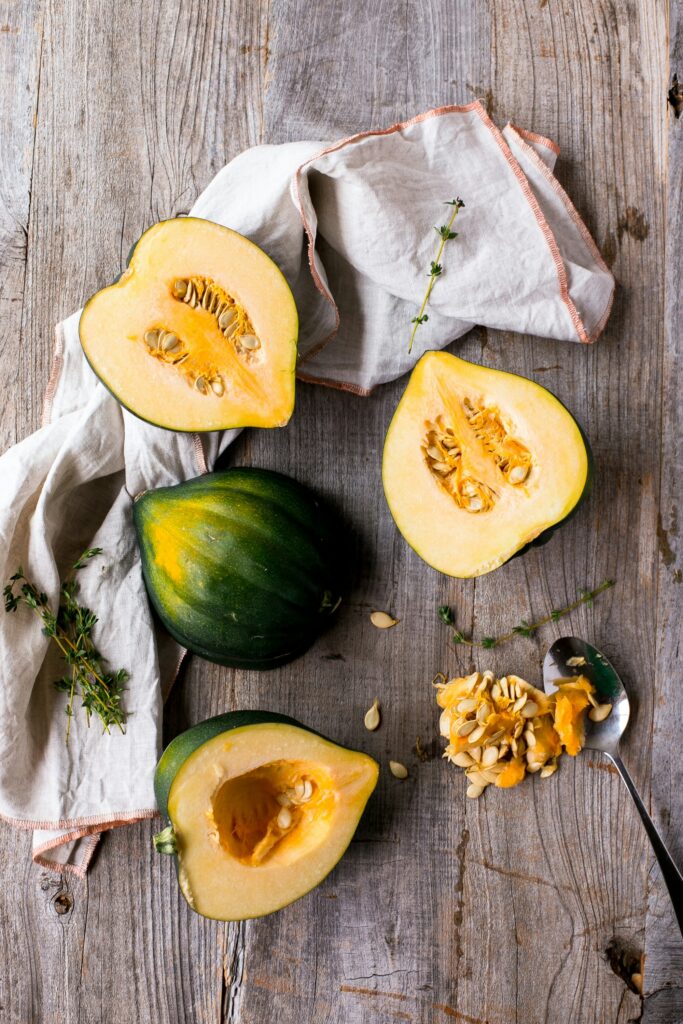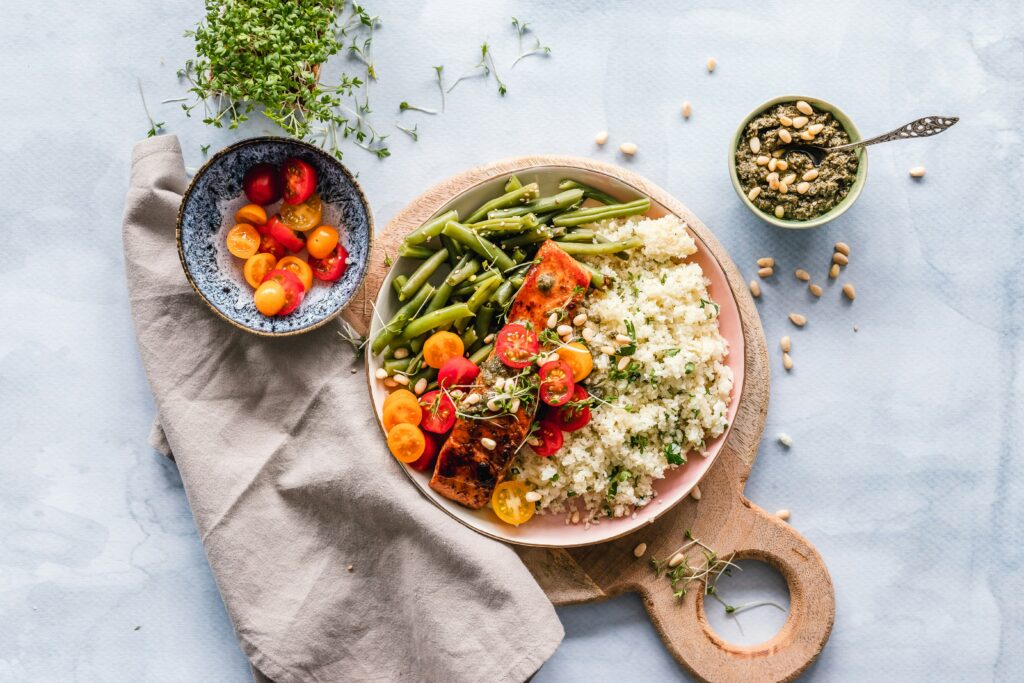Why Do Carbohydrates Get a Bad Rap?

Carbohydrates are the body’s main fuel source. In fact, according to the acceptable macronutrient distribution ranges, carbohydrates will ideally make up somewhere between 45-60% of your energy intake each day. They’re incredibly important not only for energy levels, but also digestion, brain function, metabolism, and building muscle. So, why, then do carbohydrates get such a bad rap?
Type and quantity matter.
There are three types of carbs:
- Simple sugar
- Starch
- Fiber
Simple sugars
These carbohydrates are only made of one or two sugar molecules, known as monosaccharides and disaccharides. Do you remember this from biology class?
If not, that’s okay. The important thing to know is that this means these types of carbohydrates digest very easily and quickly, thus giving us quick energy.
Some examples of simple sugars include:
- Sugar (such as white, table sugar)
- Honey
- Maple syrup
- Lactose (naturally occuring sugar in milk)
- Glucose (naturally occuring sugar in various foods)
- Fructose (naturally occuring sugar in various foods)
All carbohydrates will ultimately get broken down into glucose, a monosaccharide.
When you break down carbohydrates, your body absorbs glucose into the bloodstream, where it travels to the cells. Insulin, a hormone, helps glucose enter the cells and use it for energy.
If your body absorbs too much glucose at once, your blood sugar rises higher than normal, and your body may overproduce insulin to quickly get your blood sugar back into normal range. This can then cause a low blood sugar and result in feelings of fatigue, hunger, irritability, and shakiness. Overtime, if this happens again and again, it can lead to the development of insulin resistance and inflammation.
This does not mean simple sugars are “bad” or you shouldn’t enjoy them. It just means that, like anything, moderation is important. And, it’s important to understand how they work and function in your body. For example, if you are about to perform heavy exercise, having quick digesting carbohydrates is ideal. However, if you are sitting at a desk, having quick digesting carbohydrates will provide a pick-me-up in the moment, but will likely result in a crash in energy later on.

Starch
This type of carbohydrate is known as a polysaccharide, or multiple sugars, because it is many glucose molecules attached together. It, therefore, takes longer to digest and break down. Your body gets more steady energy from starch.
Foods containing starch include:
- Grains
- Beans
- Lentils
- Butternut and other winter squashes
- Potatoes (all kinds)
- Peas
- Corn

Fiber
Fiber looks a lot like starch in terms of structure (multiple glucose molecules attached together), but these molecules are bonded together differently. A bond which your body does not actually have the enzymes to break down. Instead, fiber slows the digestion of both simple sugars and starch. It gets broken down by gut bacteria when it reaches your colon, or goes undigested and helps your body form a healthy stool.
Adequate fiber intake is imperative for your health.
Adequate intake of dietary fiber is associated with digestive health and reduced risk for heart disease, stroke, hypertension, certain gastrointestinal disorders, obesity, type 2 diabetes, and certain cancers
Source
Foods that contain fiber include:
- Fruits
- Vegetables
- Grains
- Beans
- Lentils
- Butternut squash and other winter squashes
- Potatoes (all kinds)
- Peas
- Corn
- Nuts
- Seeds
Because fiber does not get broken down by digestive enzymes in the stomach and slows digestion of simple sugar and starch, it helps to stabilize blood sugar and, therefore, energy levels. Fiber also helps make foods more filling, so you feel full naturally when eating and stay fuller longer.
Most whole foods will have a combination of carbohydrate types. Some may contain more starch (like those of whole grains and potatoes), whereas some may contain more simple sugars (like fruit and certain vegetables), but they will always contain fiber.
Essentially, fiber is nature’s built in mechanism to keep blood sugar, energy, and appetite stable.

Why do carbohydrates get a bad rap?
It is highly processed carbohydrates that can become problematic to health, and why carbohydrates get a bad rap. When carbohydrates are processed, the fiber and some vitamins and/or minerals are often removed.
White flour, white sugar and products made with these ingredients (bread, pasta, cupcakes, crackers, cookies, cake, etc.) are naturally occurring foods with fiber removed. In order to make white flour, whole grain wheat is ground into flour and stripped of its fiber.
These foods are often easier to eat more of, and because fiber isn’t slowing down simple sugar or starch, can raise blood sugar more quickly. The lack of fiber also makes them less beneficial for gut and overall health.
These foods are not bad. They can certainly be part of a healthy diet. It is just important to balance them with foods higher in fiber. For example, aim to make at least half your grain intake whole grains, and choose foods such as whole fruit over fruit juice when possible. It doesn’t mean you can’t have a cupcake or pizza every so often, it just means you don’t want to eat ONLY cupcakes or pizza. It is when these processed carbohydrates overtake whole food carbohydrates that you may begin to see health issues, constant hunger, and drastic shifts in energy levels. Additionally, whole food carbohydrates also contain many vitamins, minerals, and antioxidants, which play a vital role in your health.
What they’re paired with also matters
Another reason why carbohydrates get a bad rap is because they are often eaten alone, or in an unbalanced meal. For example, you may eat whole grain toast with butter or fruit as a snack. Both of these are carbohydrate options with fiber and will keep you more full than white bread or fruit juice. However, pairing them with adequate protein and healthy fats is the ultimate trifecta that keeps blood sugar stable.
Fibrous foods are often higher in volume (like an apple) and will physically fill you up, but won’t keep you full for as long. Protein and fats, however, take a longer time to digest and keep you fuller longer. So, when an apple is paired with peanut butter, or cheese, for example (both of which have protein and fat), it will keep you more satisfied. Protein and fat also help keep your blood sugar stable when paired with carbohydrates, so this combination helps keep your energy levels stable as well. Learn more about why balanced meals are important.
Conclusion
Carbohydrates are not bad. In fact, you need them for optimal health. They are the foods that will give you many vitamins, minerals, antioxidants, and fiber – all of which will help you feel your best and keep you healthy. It is the processed carbohydrates that can become problematic when they make up too much of our diet. Choose more whole food carbohydrates when possible and pair them protein and healthy fats at meals and snacks to keep energy and hunger levels stable. Need help with this? Work with a dietitian!




Leave a Reply